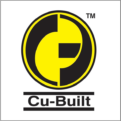In the ever-evolving world of industrial fabrication and heavy-duty welding, Self Centering Type Welding Rotators have emerged as a game-changer for manufacturers and fabricators alike. Designed to enhance productivity, ensure uniform welds, and handle both light and heavy cylindrical components with ease, these welding rotators are essential for modern fabrication shops. Whether you’re engaged in pipe welding, pressure vessel manufacturing, or tank fabrication, self centering welding rotators deliver unmatched accuracy and reliability.


In this blog, we delve into the construction, working principles, advantages, and key applications of Self Centering Welding Rotators, comparing them to conventional models and exploring their place in automated welding systems.
What are Self Centering Type Welding Rotators?
Self Centering Type Welding Rotators are a type of automated positioning equipment used for rotating cylindrical components during welding or assembly. Their standout feature is the ability to automatically center the job without manual adjustment, thanks to a dual-threaded lead screw mechanism. This design ensures that both roller brackets move equally in opposite directions, securely holding and centering the workpiece regardless of its diameter.
Core Applications:
-
Circumferential welding of pipes, tanks, and pressure vessels
-
Submerged Arc Welding (SAW)
-
MIG and TIG welding operations
-
Assembly and inspection of cylindrical workpieces
-
Surface treatment and coating applications
Construction and Working Principle
The design of a Self Centering Welding Rotator is quite similar to the Conventional Type Welding Rotator, with one significant enhancement: the roller brackets are not bolted. Instead, they are mounted on a lead screw mechanism with left-hand (LH) and right-hand (RH) threads. When the screw is rotated—either manually or via a motor—the rollers move inward or outward equally, allowing the job to be perfectly centered on the rotator.
Key Components:
-
Base Frame: Heavy-duty, fabricated steel frame designed to withstand high loads.
-
Roller Brackets: Mounted on the base frame; they slide horizontally for centering.
-
Lead Screw Mechanism: Incorporates RH & LH threads for synchronized movement.
-
Drive Unit: Equipped with motors and gearboxes for rotation.
-
Idler Unit: Provides stable support and shares the load with the drive unit.
-
Control Panel (Optional): Can include remote or foot pedal operation for ease of use.
This intelligent construction reduces downtime, enhances worker safety, and improves the quality of welds by ensuring a consistently aligned job.
Self Centering vs. Conventional Welding Rotators
Conventional Welding Rotators:
-
Rollers are fixed or manually adjustable.
-
Operator needs to re-align brackets for each job diameter.
-
Suitable for consistent workpiece sizes.
Self Centering Welding Rotators:
-
Rollers automatically adjust via lead screw.
-
No manual alignment needed.
-
Ideal for varying diameters and frequent job changes.
This makes the self centering model a preferred choice for dynamic fabrication environments where different sized jobs are common.
Benefits of Self Centering Welding Rotators
Investing in self centering welding rotators offers multiple operational, financial, and safety-related benefits:
1. Improved Welding Accuracy
Automatic centering ensures that the welding torch maintains a consistent path around the circumference, which is crucial for defect-free joints, especially in high-pressure or high-temperature applications.
2. Reduced Setup Time
Operators don’t have to manually bolt or align the rollers for each new job. This drastically reduces setup time, increasing productivity and reducing labor costs.
3. Enhanced Operator Safety
Manual adjustments can expose workers to potential risks. With a motorized or manual screw drive system, adjustments can be made safely from a distance.
4. Suitable for Varying Workpieces
Fabricators working with a range of pipe or vessel diameters find this model extremely versatile, as it adapts quickly to different sizes without tools.
5. Better Load Distribution
The dual roller system provides uniform support and load distribution, minimizing wear and ensuring smoother rotation.
6. Integration with Automation Systems
Self centering rotators can be easily integrated into robotic welding cells or automated production lines, offering compatibility with modern Industry 4.0 systems.
Technical Specifications
While the core mechanism differs, the technical specifications of self centering type rotators often mirror those of conventional rotators:
| Parameter | Specification |
|---|---|
| Capacity | 1 Ton to 200 Tons |
| Diameter Range | 200 mm – 5000 mm (or more) |
| Roller Material | PU / Rubber / Steel |
| Speed Range | Variable, via VFD |
| Power Input | 3-Phase AC Supply |
| Centering Mechanism | Manual or Motorized Lead Screw |
Industries That Benefit from Self Centering Welding Rotators
These welding rotators are widely adopted in various industries that rely on cylindrical fabrication processes:
-
Oil & Gas
-
Power Generation
-
Shipbuilding
-
Chemical & Petrochemical
-
Boiler Manufacturing
-
Wind Energy (Tower Fabrication)
-
Heavy Equipment Manufacturing
Their flexibility and speed make them invaluable in both high-volume production lines and custom fabrication units.
Choosing the Right Self Centering Welding Rotator
When selecting a self centering type welding rotator, consider the following:
-
Maximum load capacity
-
Diameter range of the jobs
-
Type of welding process (TIG, MIG, SAW, etc.)
-
Floor space and layout of your workshop
-
Manual vs. motorized centering preference
-
Compatibility with existing automation systems
Always opt for a rotator with robust construction, branded components, and a proven track record of durability.
Conclusion
In today’s competitive manufacturing environment, precision, speed, and adaptability are key. Self Centering Type Welding Rotators offer an effective solution that reduces downtime, ensures perfect alignment, and enhances welding quality across diverse industrial applications. Their ability to handle varying job sizes with minimal manual intervention makes them a smart investment for any forward-thinking fabrication business.
Whether you’re automating your workshop or simply upgrading from conventional rotators, the self centering model provides a future-ready platform for your welding needs.

